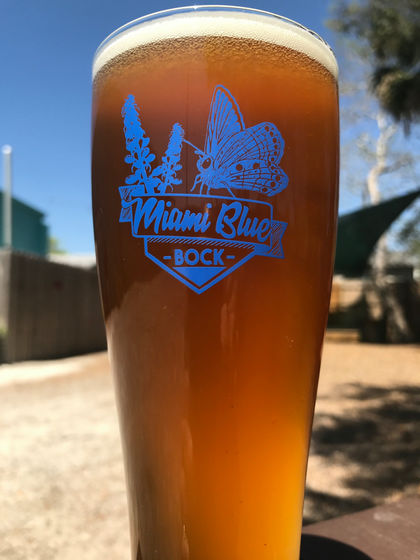Butterflies that have been driven to extinction are resurrected by desperate efforts of researchers and continue to increase in nature

by US Fish and Wildlife Service Southeast Region
A valuable butterfly once threatened with extinction regained the number of individuals to the extent that they can spontaneously propagate in the natural park in 2 years from the start of the activity due to the conservation movement by scientists. Local media reports its details.
Two Florida Keys butterflies have been saved from extinction | Miami Herald
https://www.miamiherald.com/news/local/community/florida-keys/article 215330270.html
Miami Blue , a habitat in the southeast Florida region, is a butterfly that has been designated as an endangered species by the American Endangered Species Act . Although it was a butterfly that was seen in Florida once, the number of individuals declined rapidly due to urban development in recent years. Moreover, most of it was killed by " Hurricane Andrew " which hit the state of Florida in the United States in 1992 and brought about an economic loss of 26.5 billion dollars (about 3 trillion yen), and in 1999 a long and narrow archipelago of Florida " It was thought that it was extinct until tens of animals surviving at the tip of Florida Keys were discovered.

The shrews are big butterflies that grow as much as 12 cm wide, and inhabit tropical hardwoods in the southeastern part of Florida. Urban development has progressed, the number of trees has decreased, and the number of individuals has drastically decreased due to the increasing use of insecticides. In 2009, it was designated as "endangered (urgent)" in the conservation situation of NatureServe , and it became extremely rare species, as only 4 cases were witnessed in 2012.

by US Fish and Wildlife Service Southeast Region
Researchers belonging to several organizations such as the University of Florida · National Park Service · Florida Province Fish and Wildlife Conservation Committee · North American Butterfly Association respond to the conservation of the endangered Miami · Blue and Shausshaha, cooperate and protect activities I started.
In 2003, the University of Florida collected 100 Miami / Blue eggs in the wild and began breeding within the university. In 2004, it increased to 2,500 and released it to a natural park such as Biscayne National Park and Everglades National Park . In spite of that, it seems that the number of Miami / Blue populations has been increasing little by little in Florida Keys' National Park, although it made considerable difficulties.
In addition, in order to obtain the budget for conservation activities of Miami · Blue, the Florida Museum cooperates with the local brewery and sells limited beer "Miami · Blue · Bock". In addition, by scanning Miami · Blue Bock and Pilsner Glass, we are also doing initiatives such as distributing Miami · Blue 3D holograms and applications that can enjoy commentary about their ecology.

On the other hand, Shausshaeha has a short life of about 2 weeks after adulthood, and can not leave eggs unless you can not copulate during that time. As a result, the research team collected larvae and eggs of the shrewshae from spring 2012 through early summer, and raised eggs while breeding within the McGuire Center for Lepidoptera & Biodiversity of the Florida Nature Museum.
Then, in June 2014, the research team released eleven females and four male shrimp whiskers and 308 larvae to Elliott Kee Island. As the larvae released to the leaves of the lime native to the island, it grew rapidly by eating leaves tremendously, and Jarrett Daniel, a research member, said, "As if to eat leaves It looks like a machine for. "
However, growing larvae of shrewshaeja and releasing them to the park does not necessarily mean that all of the larvae will be adults. Predators such as squirrels and birds inhabiting the park and many of the larvae die before becoming adults due to the rainy season of tropical cyclones, so only 2% of the larvae released It is said that it is less than it. "They must live in harsh environments, the larvae of the shrews are also the food of different creatures, which is natural," Daniels says.
Related Posts:







